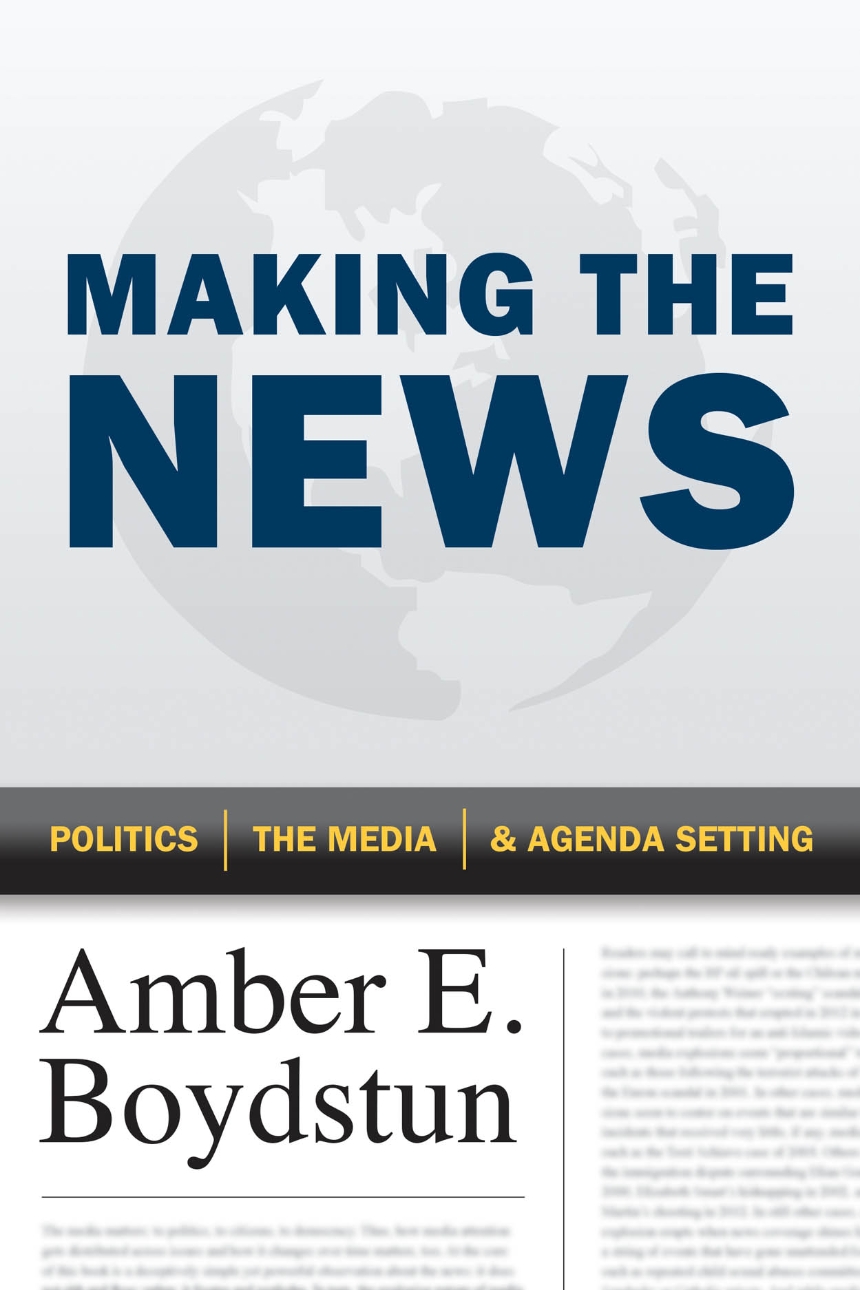Making the News
Politics, the Media, and Agenda Setting
Media attention can play a profound role in whether or not officials act on a policy issue, but how policy issues make the news in the first place has remained a puzzle. Why do some issues go viral and then just as quickly fall off the radar? How is it that the media can sustain public interest for months in a complex story like negotiations over Obamacare while ignoring other important issues in favor of stories on “balloon boy?”
With Making the News, Amber Boydstun offers an eye-opening look at the explosive patterns of media attention that determine which issues are brought before the public. At the heart of her argument is the observation that the media have two modes: an “alarm mode” for breaking stories and a “patrol mode” for covering them in greater depth. While institutional incentives often initiate alarm mode around a story, they also propel news outlets into the watchdog-like patrol mode around its policy implications until the next big news item breaks. What results from this pattern of fixation followed by rapid change is skewed coverage of policy issues, with a few receiving the majority of media attention while others receive none at all. Boydstun documents this systemic explosiveness and skew through analysis of media coverage across policy issues, including in-depth looks at the waxing and waning of coverage around two issues: capital punishment and the “war on terror.”
Making the News shows how the seemingly unpredictable day-to-day decisions of the newsroom produce distinct patterns of operation with implications—good and bad—for national politics.
Supplementary information for the book is on the author’s website.
280 pages | 32 line drawings, 14 tables | 6 x 9 | © 2013
Political Science: American Government and Politics
Reviews
Table of Contents
Acknowledgments
Chapter 1. Patterns in the News and Why They Matter
Chapter 2. The Forces that Drive the News
Chapter 3. The Alarm/Patrol Hybrid Model of News Generation
Chapter 4. Content and Change on the New York Times Front Page
Chapter 5. Explaining Front-Page Attention
Chapter 6. The Rise and Fall of the War on Terror and the Death Penalty in the News
Chapter 7. How Institutional Mechanisms Lead to Media Skew and Explosiveness
Chapter 8. Skew and Explosiveness in the Shifting Media Landscape
Chapter 9. Implications for Politics and Society
Appendix
Notes
References
Index
Chapter 1. Patterns in the News and Why They Matter
Chapter 2. The Forces that Drive the News
Chapter 3. The Alarm/Patrol Hybrid Model of News Generation
Chapter 4. Content and Change on the New York Times Front Page
Chapter 5. Explaining Front-Page Attention
Chapter 6. The Rise and Fall of the War on Terror and the Death Penalty in the News
Chapter 7. How Institutional Mechanisms Lead to Media Skew and Explosiveness
Chapter 8. Skew and Explosiveness in the Shifting Media Landscape
Chapter 9. Implications for Politics and Society
Appendix
Notes
References
Index
Awards
American Political Science Association: Doris Graber Outstanding Book Award
Won
